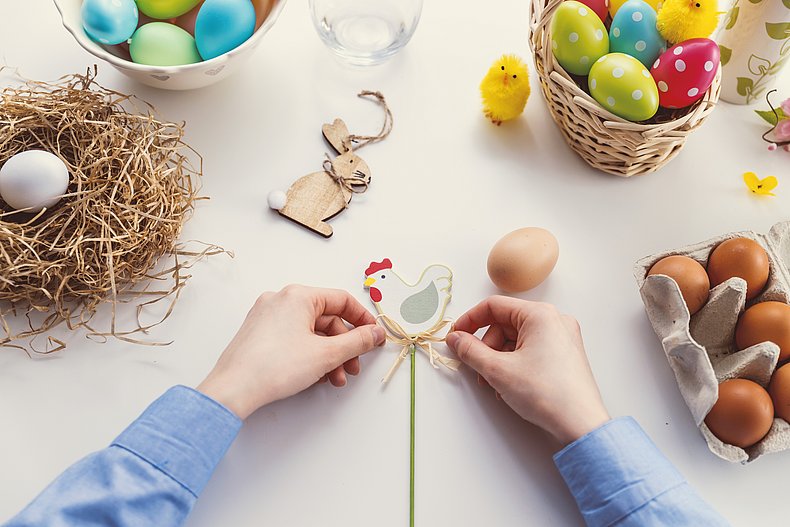An important and exciting part of studying abroad is getting to know the customs, traditions and festivals of a different culture. Easter is a celebration that is particularly important in all Christian cultures. What is behind these holidays and how they are typically spent in Germany (regardless of whether you are Christian or not) is explained in this blog post.
What does a typical German Easter look like?
What and when is Easter?
Good Friday, the feast of Easter, is the highest holiday for both the Catholic and Protestant churches. On this day, Christians remember the crucifixion and thus the execution of their Messiah, Jesus Christ. On the third day after this event, according to the Bible, Jesus was resurrected from the dead. This resurrection, which is essential for the Christian faith and its self-understanding, is celebrated on Easter Sunday and Monday. Easter does not have a fixed date such as Christmas, but always takes place on the first Sunday after the first full moon in spring. 2019 that’s April 21.
How do Easter holidays typically go in Germany?
The first Easter holiday is Palm Sunday, the Sunday before Easter Sunday. On this day special masses and church services are already held, but this does not have a direct influence on the everyday life of most Germans. In addition, the Holy Thursday, on which Christians commemorate the Last Supper of Jesus, is not particularly celebrated apart from some church services. Good Friday, on the other hand, is an official holiday. Not only are almost all shops, universities and companies closed here, there is also a ban on dancing and celebrating. Since this day is a so-called "silent day", thus a day of mourning, no parties or other public meetings may be organized in most federal states. Sometimes even cinemas, theatres and the like are affected. On the other hand, Holy Saturday is a normal business day. On Easter Sunday and Monday shops, universities and the like are also closed. Many families have common feasts on these days, attend church services or organize an Easter egg hunt for the children. You can find out exactly what this is all about in the next section.
Easter Eggs Paint and Search
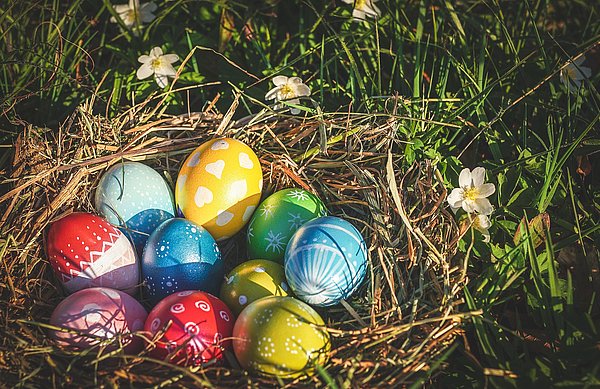
A central symbol at Easter is of course the (painted) egg. Even before Christianity could establish itself in Europe, the egg stood as a symbol of fertility and rebirth. The Christian Church transferred this symbolism to the resurrection of Jesus Christ - as the chick breaks through the shell, Jesus came alive from the rock tomb. Today at Easter you can see colorfully painted and decorated eggs. These are boiled hard to preserve and then dyed. It is not clear where this custom comes from. Some say that early Christians dyed the eggs red, because this color symbolizes Jesus' grave. Others say that the colored eggs actually originated from an ancient pagan custom that Christianity merely appropriated. The highlight of Easter for the children is usually the Easter egg hunt. Traditionally, the colorful Easter eggs - nowadays mainly chocolate eggs, sweets or small gifts - are hidden in the garden, apartment or similar on the morning of Easter Sunday for the little ones, who are then allowed to search and keep them. However, the origin of this custom is neither clearly nor unambiguously connected with Christianity.
Easter Bunny
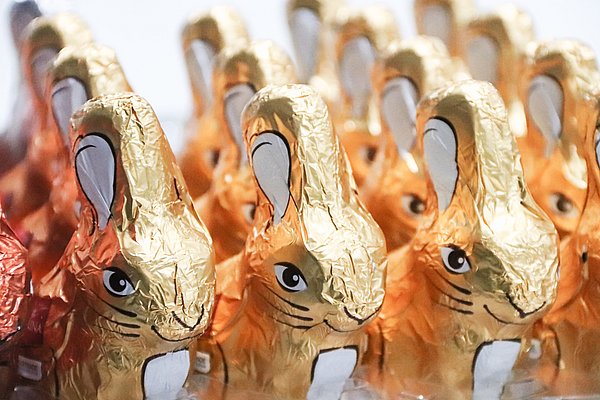
Just as Santa Claus brings presents on Christmas Eve, the Easter bunny brings sweets and Easter presents. After all, somebody has to hide these things - or at least serve as an explanation for the little ones. The fact that it's a rabbit in particular has a symbolic reason: The rabbit is an animal that has a lot of offspring (up to twenty children per year) and therefore – like the (Easter) egg – stands for fertility and new life. In addition to its role as a hide-and-seek gift-bringer, the rabbit can also be seen everywhere else during Easter, thus the chocolate rabbit is one of the most popular Easter Sweets.
Easter Fire
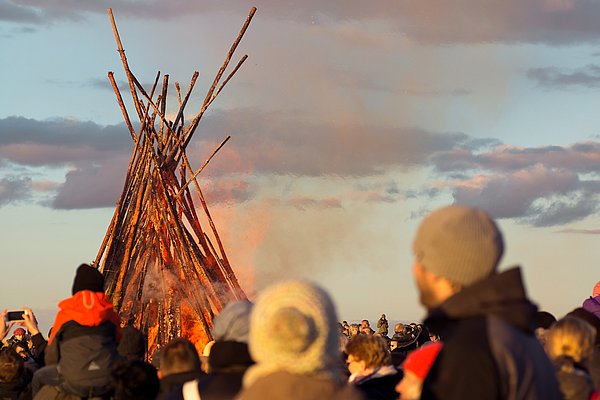
In Germany and some parts of Austria the so-called Easter fires belong to the most important customs around the Easter holidays. Generally, wood, dried shrubs and the like are piled up as high as possible and (depending on the region) lit on Holy Saturday or Easter Sunday evening. The custom is very widespread especially in the countryside. Sometimes there are real competitions about which village ignites the biggest fire. Therefore, the stacks of wood are strictly guarded shortly before the ignition in some places. After the ignition one gathers then sociably around the fire. Often grilled food and beer or mulled wine are served. In some regions, bets are also placed on the combustion time of a certain piece of wood. In other areas you place a (straw) doll on the top of the fire. This then stands for Judas, who betrayed Jesus to the Romans and thus made his execution possible. Some regions also developed very special variants of the Easter fire, so for example in the Westphalian place Lügde wooden wheels are ignited and rolled down a slope burning. The fire customs are heathen-Germanic origin. Presumably, they were originally meant to drive away winter and its evil Spirits.
Easter Markets
One of the most famous German traditions worldwide are the Christmas markets, which are set up in most German cities in December. Also around Easter there are numerous Easter markets, spring festivals and fairs in Germany. Many towns and cities organize their own festivals either on Easter weekend or in the weeks before or after the festivities. There are big local differences regarding the exact orientation. Mostly, however, there are various rides, handicrafts and gift as well as a wide selection of food and drink stalls.
Typical Easter Food and Biscuits
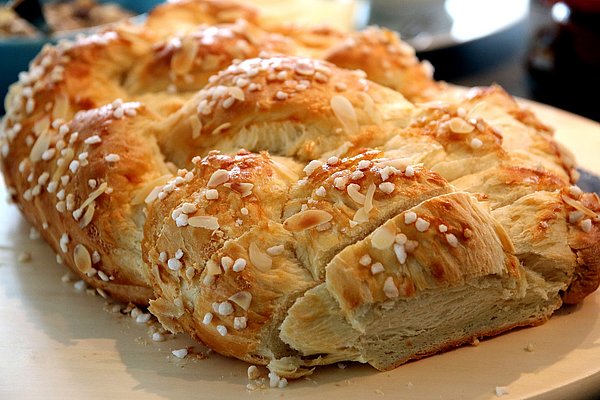
Every traditional celebration also includes special recipes and dishes or food customs. Catholic Christians traditionally spend a Lent in the weeks before Easter, from Ash Wednesday on. In order to get to know deprivation, meat is to be renounced as well as voluntarily luxury goods such as sweets or alcohol. Nowadays fasting is no longer necessarily linked to the Catholic Church. Many also try to do without certain foods or stimulants in order to live in healthier conditions. One way or the other, Easter as the end of this time is often used as an opportunity to really enjoy yourself again. There are typical dishes for each Holiday.
On Holy Thursday green dishes are classically served, often spinach, but courgettes, kale or wild garlic are popular vegetables as well. Good Friday, as already mentioned, is the day on which Jesus' crucifixion is commemorated. On this day, traditionally no meat is eaten, only fish. In which kind this is prepared and which kind it concerns exactly, is very different. Holy Saturday is often regarded as the day of preparation for Easter Sunday and is therefore traditionally used for baking. Among the classic pastries are the Easter lamb, a sweet bread in the shape of a lamb, short pastry biscuits in the shape of rabbits and Easter plaits, which are braided from yeast dough and often refined with raisins, candied fruit or almonds. Most of these pastries are served for an extensive breakfast on Easter Sunday. On Easter Sunday or Monday, elaborate banquets are usually eaten. Lamb meat and roast hare are particularly popular. Some families have firm customs concerning the Easter meal, others eat simply according to which the sense suits them.
What is the best way to spend Easter as a student?
For many Germans, Easter is still a classic family celebration. Accordingly, it can be difficult for students from abroad to take part in the festivities. However, maybe you have one or the other friend who would be happy to take you to the private family celebrations and thus present a classic Easter in the family circle. If not, it is definitely worth visiting Easter markets and fires and the traditional Easter pastries are not only made by hand, but can also be bought in bakeries and supermarkets around the holidays. Also on Easter Sunday, there are often big parties or other events where you can celebrate properly. We wish you some nice Easter holidays and a lot of fun trying it out J



